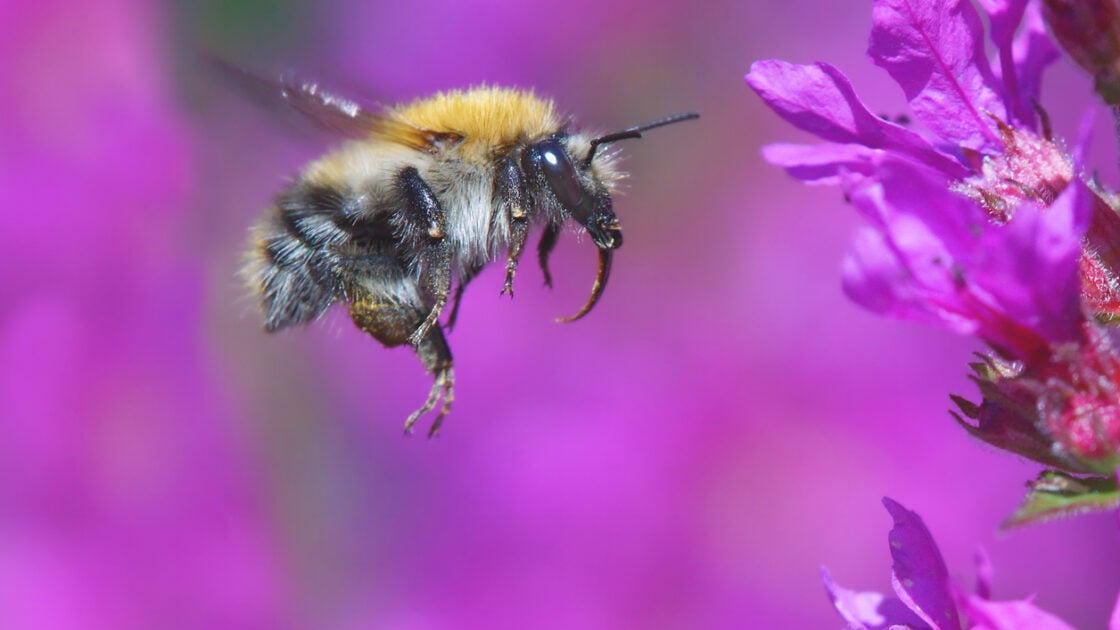Bumblebees Listed as an Endangered Species in the U.S.

The U.S. Fish and Wildlife Service officially placed the rusty patched bumblebee, one of the most common American bumblebees, on the Endangered Species List Tuesday. The bumblebee, the first to be designated endangered in the continental U.S., will have a protected status beginning on February 10.
“Today’s Endangered Species listing is the best—and probably last—hope for the recovery of the rusty patched bumble bee,” Natural Resources Defense Council Senior Attorney Rebecca Riley said in a statement from the Xerces Society. “Bumble bees are dying off, vanishing from our farms, gardens, and parks, where they were once found in great numbers.”
The protected status will include requirements for a recovery plan and for federal funds for the protection of bumblebee habitats.
Rusty patched bumblebees have been in a dramatic 88 percent decline since the late-1990s, a problem that most experts attribute to a combination of habitat loss, pathogens, and increased pesticide use in agriculture, particularly neonicotinoid pesticides.
The bald eagle, which once famously figured on the endangered species list, saw its population increase after DDT was banned in the United States. Quartz reports, however, that the bumblebee is “unlikely to get thrown the same lifeline.”
“Neonicotinoids, the class of widely-used agricultural pesticides many experts believe is helping decimate the bee population, are unlikely to be banned while Donald Trump and his cabinet are in office—even though the U.S. Environmental Protection Agency is so, so close to regulating them for the first time,” reports Quartz, noting that Myron Ebell, the Trump’s EPA transition team leader, directly opposes the regulation of neonicotinoids.
In Canada, the rusty patched bumblebee has benefited from an endangered species status since 2012.
The only other bees to be listed as endangered species in the U.S. are seven species of yellow-faced bees native to Hawaii, which were granted this status last October. The Service is still considering whether to list the monarch butterfly as well.
The trend of pollinator decline has been raising serious concerns about the global food supply, of which 75 percent relies at least partially on pollinators.
“Pollinators are small but mighty parts of the natural mechanism that sustains us and our world,” Tom Melius, the U.S. Fish and Wildlife Service Midwest regional director, told the Associated Press. “Without them, our forests, parks, meadows and shrublands, and the abundant, vibrant life they support, cannot survive, and our crops require laborious, costly pollination by hand.”
About 40 percent of invertebrate pollinators are currently facing extinction, according to a recent assessment sponsored by the United Nations.
Related on Organic Authority
Could Organic Honey ‘Bee’ Bogus? Why It’s Going Extinct in the U.S.
Endangered Species Push Toward Extinction
Home Garden Company Ortho Nixes Neonicotinoids to Help Save the Bees

